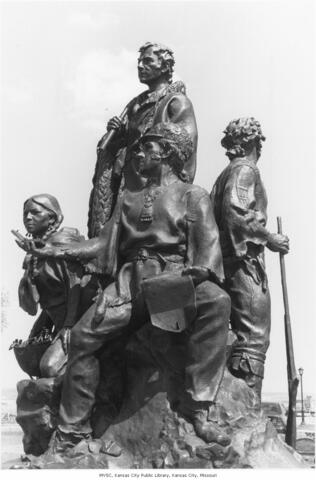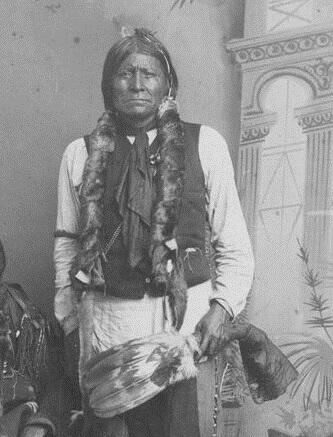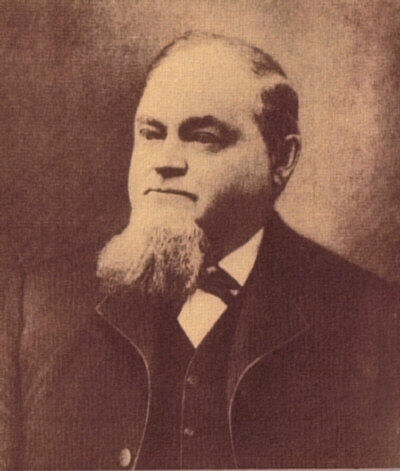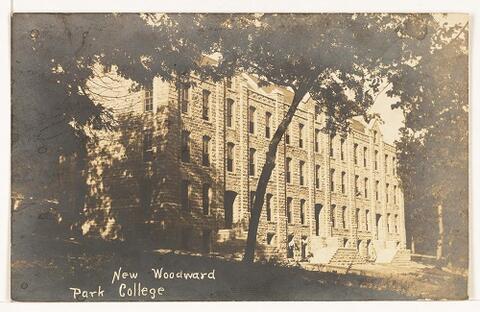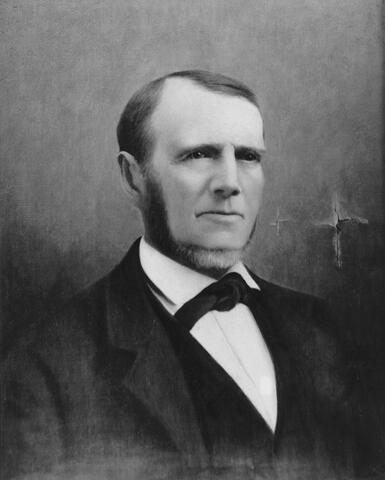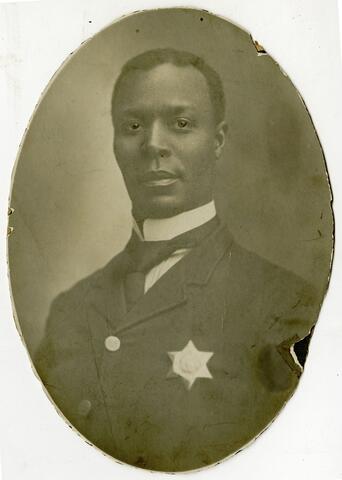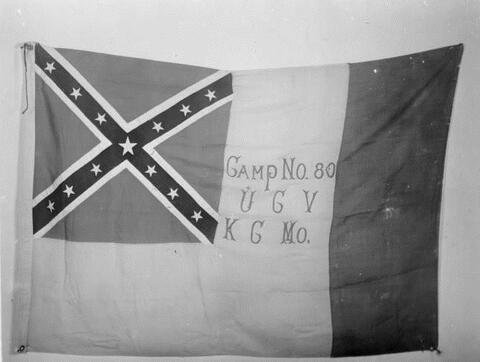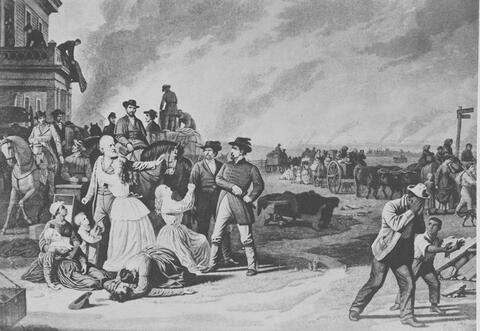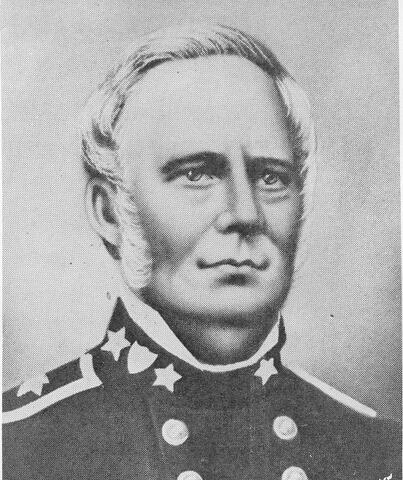June 26, 1804: The Corps of Discovery, led by Meriwether Lewis and William Clark, arrived in the area that would later become Kansas City. The party was commissioned by the United States government to explore lands in and west of the newly acquired Louisiana Territory, from present-day St. Louis to Oregon. As they passed through what is now the Kansas City area, Lewis and Clark became the first Americans to formally record their observations of the landscape and local Indians. These descriptions drew the interest of the United States government, which led to the creation of a fort and the first American settlers in the area.
This Week in Kansas City History
October 4, 1814: Alexander Majors was born to a farming family near the town of Franklin, Kentucky. He eventually became one of the most important freight-haulers on the Santa Fe Trail, bringing him considerable fame and fortune in the 1850s. Today, however, Alexander Majors is most often remembered as one of the founders of the Pony Express.
August 10, 1825: The U.S. government acquired a right-of-way for the Santa Fe Trail from representatives of the Great and Little Osage Nations. The treaty, and others like it, greatly reduced tensions between Native Americans and white traders and settlers along the trade route between northwestern Missouri and the city of Santa Fe, then a part of Mexico (the U.S. would acquire the territory in 1848 as a result of the Mexican-American War). The route carried almost all of the wagon-based trade between the United States and Santa Fe between 1825 and 1872, when it was finally replaced by railroads. Along the way, its eastern terminus enriched the Missouri towns of Independence, Westport and Kansas City.
April 24, 1833: George Muehlebach was born into a farming family in Argau, Switzerland. He went on to operate the Muehlebach Brewing Company; one of the most successful businesses in Kansas City by the early 20th century. Even after his death, the Muehlebach name lived on in Kansas City at the baseball field that eventually became Municipal Stadium and the luxurious Hotel Muehlebach.
March 27, 1836: George Shepherd Park narrowly escaped death at the hands of a Mexican firing squad in a mass-execution that later became known as the Goliad Massacre. A few months earlier, Park had joined the Texan (then known as "Texian") Army to fight for Texas' independence from Mexico. While it is entirely possible that he was present at the massacre, no definitive proof exists. Still, popular perception at the time granted Park a degree of celebrity for having escaped the massacre alive, and after the Texas Revolution ended, he moved to Jackson County, Missouri.
November 14, 1838: In 1838, the town of Westport stood near the western edge of the American frontier and served as a disembarking point for traders following the Santa Fe Trail to present-day New Mexico, then a part of Mexico. To reach Westport from the east, traders traveled by river to a natural rock landing near the junction of the Kansas and Missouri Rivers and then trekked four miles south to Westport. The river landing was a promising location for a town of its own, which prompted 14 investors to form the Town of Kansas Company and purchase the land from the Gabriel Prudhomme estate for $4,220.
March 15, 1858: Lafayette Alonzo Tillman, born on March 15, 1858, in Evansville, Indiana, would go on to become one of the exceptional black leaders in Kansas City by the turn of the twentieth century. Little is known about Tillman's early life, but he graduated high school and managed to attend Oberlin College of Ohio and embarked on a singing career as a bass. He supplemented his singing by working as a barber and restaurant owner. By 1889, Tillman had moved to Kansas City, Missouri, where he opened a new barber shop and became a leader in the black community. He also studied law at the Kansas City School of Law but never completed a formal degree.
April 30, 1861: The Confederate attack on Fort Sumter marked the beginning of the Civil War and left the populations of border states such as Missouri pondering where their loyalties lay. In the months immediately prior to the war's outbreak, the leaders of Kansas City (then called the Town of Kansas), had preferred to stay neutral and focus on the local economy instead. But when a band of residents raised a Confederate flag, it appeared that Kansas City, and perhaps even the state of Missouri, would tilt toward the Southern, secessionist side.
August 25, 1863: Union General Thomas E. Ewing issued Order No. 11 to forcibly remove all residents of Jackson, Bates, and Cass counties, except for those who lived within a mile of Kansas City, Westport, Independence, or one of three nearby military posts. General Ewing's critics considered the new measures to be a draconian form of martial law, but Ewing hoped that the order would end local support for the pro-Confederate guerilla forces that frequently led raids into Kansas and cut off nearby trade routes.
October 23, 1864: The Battle in Westport pitted Confederate General Sterling Price against Union General Samuel Curtis in the largest Civil War battle fought west of the Mississippi River. General Price had begun the invasion of Missouri in September 1864 and intended it to force the Union to send more troops to the Western theatre, thereby relieving pressure on the Confederate armies in the East and weakening Northern political solidarity. Price’s raids at Pilot Knob in the eastern part of the state and Jefferson City in the central part of the state were repulsed by strong Union resistance, so he set his sights on Fort Leavenworth in northeast Kansas.

